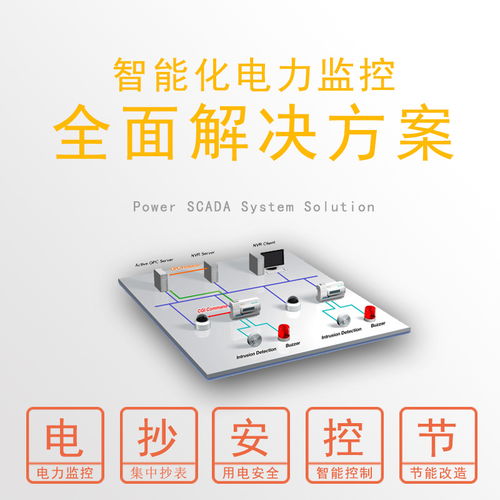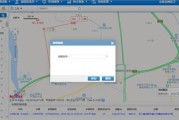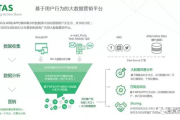大数据监控管理问题研究大数据监控管理是当今信息技术领域中的重要议题,它涉及到如何有效地管理和监控在企业或组织内产生的大量数据。随着大数据技术的不断发展...
2024-05-15 492 大数据监控很可怕 大数据监控是什么意思 手机大数据监控案例
In today's datadriven world, the effective monitoring of big data systems is essential for ensuring optimal performance, reliability, and security. With numerous options available in the market, selecting the right big data monitoring system can be challenging. Let's explore some key considerations and top contenders in this field to help you make an informed decision.
Look for a monitoring system that can scale seamlessly with your growing data volume and processing needs. Solutions like Apache Kafka and Prometheus are renowned for their scalability and ability to handle massive data streams.
Realtime monitoring capabilities are crucial for detecting and addressing issues promptly. Systems like Elasticsearch and Grafana offer realtime analytics and visualization, empowering you to react swiftly to changing conditions.
Choose a monitoring system that provides intuitive dashboards, customizable reports, and advanced data visualization features. Tools such as Splunk and Tableau excel in this aspect, offering rich graphical representations of your big data metrics.
Opt for a monitoring solution that prioritizes fault tolerance and reliability to minimize downtime and data loss. Apache Hadoop and Nagios are renowned for their robust fault tolerance mechanisms and proactive alerting capabilities.

Ensure that the monitoring system adheres to stringent security standards and compliance requirements, especially if dealing with sensitive data. Solutions like Cloudera Manager and Datadog offer robust security features and compliance frameworks to safeguard your data assets.
Consider the compatibility of the monitoring system with your existing infrastructure and technologies. Solutions that offer seamless integration with popular big data platforms like Apache Spark and Hadoop ecosystem tools can streamline deployment and management processes.
Evaluate the availability of community support, documentation, and user resources for the monitoring system. Opensource solutions like Apache Flink and InfluxDB often benefit from vibrant communities and extensive documentation, facilitating easier adoption and troubleshooting.
Assess the total cost of ownership, including licensing fees, support costs, and potential scalability expenses. While opensource solutions like Apache Cassandra and Prometheus offer costeffective options, proprietary solutions may provide additional features and dedicated support services at a premium.
Selecting the best big data monitoring system involves careful consideration of factors such as scalability, realtime monitoring capabilities, data visualization, fault tolerance, security, compatibility, community support, and cost. By evaluating these criteria and exploring top contenders like Apache Kafka, Elasticsearch, Splunk, and Cloudera Manager, you can identify the solution that best aligns with your organization's requirements and objectives, ensuring efficient and reliable monitoring of your big data infrastructure.
Now that you have a comprehensive understanding of what to look for in a big data monitoring system, you can confidently navigate the market and make an informed decision that meets your organization's needs.
[Your Name]
标签: 大数据怎么监控到了哪些街道 大数据监控很可怕 大数据监控每个人 数字监控系统十大品牌 大数据监控了你的手机
相关文章

大数据监控管理问题研究大数据监控管理是当今信息技术领域中的重要议题,它涉及到如何有效地管理和监控在企业或组织内产生的大量数据。随着大数据技术的不断发展...
2024-05-15 492 大数据监控很可怕 大数据监控是什么意思 手机大数据监控案例

###大数据监控考试答案大全大数据监控是当今信息技术领域中的重要分支,它涉及到数据采集、存储、处理、分析以及监控等方面。以下是一些可能出现在大数据监控...
2024-04-20 962 大数据监控是什么意思 大数据监控很可怕 大数据监控出省 大数据监控到什么程度

随着科技的不断发展,大数据技术在各个领域都得到了广泛的应用,其中包括监控领域。摄像头监管是一种重要的安全监控手段,通过大数据技术的应用,可以提高监控效...
2024-04-18 213 大数据监控很可怕 大数据监听 摄像头数据一般保存多久 大数据监管红线 大数据监管中心

随着大数据技术的发展,越来越多的家庭开始考虑在家庭生活中应用大数据监控技术,以提高家庭成员的安全和健康。以下是一些关于大数据监控在家庭中的应用和建议:...
2024-04-16 211 大数据监控每个人 大数据监控很可怕 大数据被监控了是什么意思

随着大数据技术的发展和应用,越来越多的个人财富管理机构开始利用大数据技术来监控和管理个人财富。大数据监控个人财富可以帮助个人更好地了解自己的财务状况,...
2024-04-13 942 大数据监控很可怕 大数据监控每个人 大数据会监视个人隐私吗 大数据个人信息泄露 大数据与财务风险管控